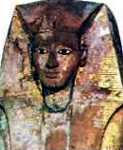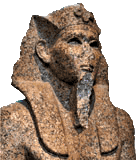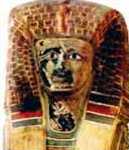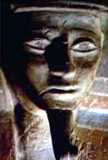|
The dynasty
was a continuation of the Theban Dynasty XIII and likewise was paying tribute to
the Hyksos that held rule in Delta and central Egypt. The earlier rulers of the
Dynasty made no apparent attempt to challange the authority of the Hyksos, and
an uneasy truce existed between the two lineages for some time. Some of
the kings of the XVIIth Dynasty were known as Intef, and their large
and heavy coffins with vulture-wing feathered decoration have been found at
Thebes in the area of the Dra Abu el-Naga. Last rulers of this Dynasty,
Seqenenre Tao II and his two sons - Kamose and
Ahmose, overthrew the Hyksos invader and restored Egyptian independence. |
||







